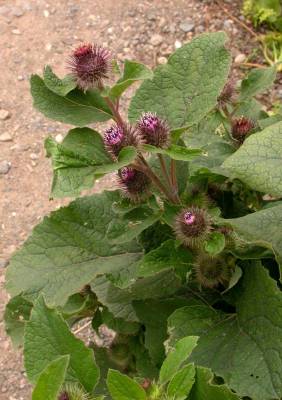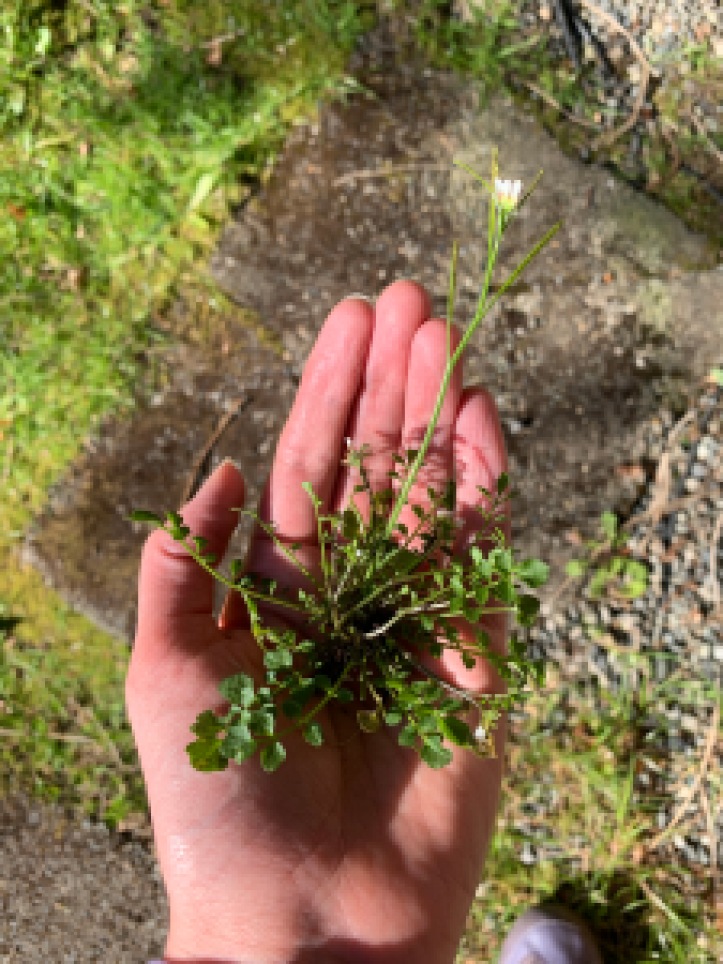When people first hear about our work at the Noxious Weed Control Program they sometimes assume we have it out for all weeds (or even all non-native plants). Nothing could be further from the case! The fact is only a very tiny percentage of introduced plant species become noxious weeds – so tiny that we can fit them all into a single brochure. In fact, I have a real soft spot for some of our common weedy plants because seeing them tells me that Spring is finally here! You’ve likely seen these plants before, and may have less fond feelings for them – and that’s ok.

Dandelion (Taraxacum officinale) might be the first plant you think of when you hear the word “weed.” But dandelions didn’t make our Noxious Weed List because they don’t cause negative impacts to our environment, agriculture, or human health. They are simply a nuisance when they pop up where they’re not wanted. What’s the best way to deal with dandelions? Learn to live with them! Dandelions flower earlier than many other plants – at about the same time bumblebees and honeybees are emerging. Particularly in urban areas dandelions are important sources of pollen and nectar in April and May, before other plants’ flowers begin to catch up. Plus songbirds like goldfinches eat the dandelion seeds. Of course, if you don’t like the look of dandelions in your yard you can try to control them. But consider what else you could be doing with the time it takes to repeatedly dig out those 18-inch-long taproots!

Dandelions were brought by European immigrants who valued the plant for its usefulness in making medicine, food and wine. Dandelion leaves are edible (and tasty), especially when harvested before the plants flower. Another plant that was brought to this continent beginning 300 years ago for its medicinal and culinary uses is common burdock (Arctium minus). This plant is native from Scandinavia all the way to East Asia. Burdock surely reminded immigrants from many different cultures of home. Today the root is still commonly eaten in East Asian cuisine, harvested by foragers and is the darling of macrobiotic cooking.

Burdock is also a super neat plant with cunning seed spreading abilities. The burrs that surround the seed heads actually inspired the invention of Velcro. These seed heads will catch on anything soft: fur, hair, clothing, and backpacks. Eventually the animal or hiker will notice the burrs and pull them off, but by then the seeds have hitched a ride far from the original plants. Of course if you have animals it can get quite tedious to keep pulling burdock seed heads out of their fur. The good news is digging up the whole root to stir-fry it will also prevent the plant from going to seed or coming back next year.

Perhaps you’ve already heard about dandelion and burdock, but did you know that even more of our common garden weeds are also good to eat?

Chickweed (Stellaria media) is especially common in lawns and yards around the world. Its fleshy green or red stems have a single line of white hairs and they sprawl along the ground for up to 1 foot. The cute quarter inch flowers appear to have 10 white petals (actually five pairs of fused petals that look like little hearts). Chickweed is often fed to poultry and that’s where it gets its common name. But it also makes a lovely addition to salads and can be cooked in many creative ways.

Hairy bittercress or shotweed (Cardamine hirsuta) is one of the first plants to bloom in the spring and its tiny white flowers make me smile (at least until I forget to remove them from my vegetable bed before they all go to seed). This plant is a tiny member of the mustard (or Brassicaceae) family and the leaves have a light peppery taste when eaten raw. It also wins the award for easiest weed ever to control – you don’t even need tools. In Spring when the soil is still moist you can just pull the whole 6 inch tall plants out by their wimpy roots. But if you wait too long and the skinny seed pods (or siliques) are ripe they will shoot their tiny seeds at you with force, which can be quite alarming!
So if all these weeds didn’t make our list, what does it take to be labeled a “noxious weed?” Noxious weeds aren’t just a nuisance in yards and gardens. These are plants that have significant negative impacts to our natural environment, our economy or to public health. Noxious weeds aren’t evil plants that we’re trying to wipe off the face of the Earth. Somewhere else in the world these plants are a valuable part of a native ecosystem. However, these are plants with overdeveloped survival abilities that allow them to thrive in the mild climate of the Pacific Northwest. And since they are in a new environment without the herbivores, insects and diseases that would normally keep them in check, they have the potential to grow out of control.
Next week we’ll dive into a couple of these noxious weeds that may look unassuming, but have serious negative impacts to human and environmental health. What are your favorite or least favorite garden weeds?
Learn more about noxious weeds:
King County Noxious Weed Control Program
Washington State Noxious Weed Control Board

Really enjoyed your blog. I’m glad to hear that someone else has a soft spot for dandelions and hairy bittercress. Burdock I’m not so sure. I’m just getting to know Chickweed. It flew under my radar for a long time so I’m happy to learn that I wasn’t aiding and abetting a noxious weed.
Thanks for your comment, John! I also have mixed feelings about burdock – I was once covered literally head to toe in burrs while controlling knotweed. But I have respect for a plant that has outsmarted animals in order to move its seeds around!
You missed one major negative impact of dandelions. That is the negative effect on a child’s mental health when the parents call dandelions a salad and force the poor child to eat them. I will forever consider them more than a mere nuisance!
Enjoyed reading about weeds while having my morning’s cup of coffee.